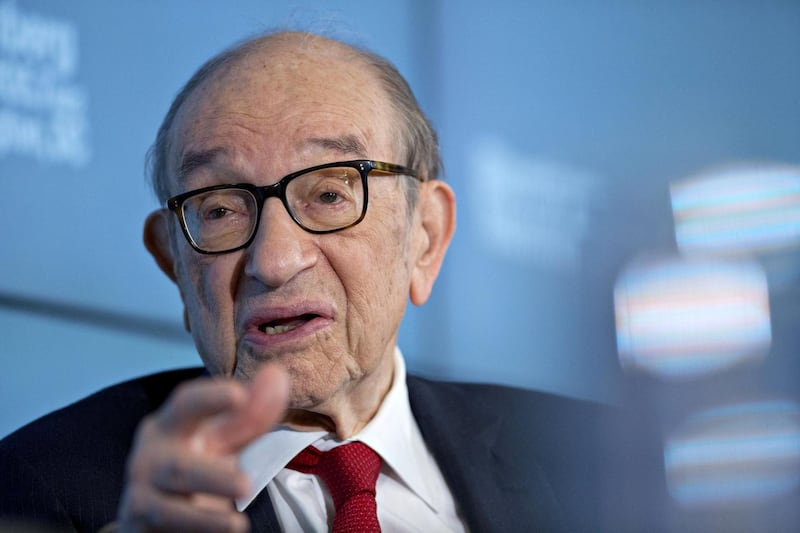Alan Greenspan may be in his 90s, but the former Federal Reserve chief is still a riveting speaker, capable of dazzling audiences with his insights.
That the world is in a difficult place is a commonplace observation. As a rule, attempts to explain why generate more heat than light. In an appearance at the Policy Exchange think tank in London last week, however, Mr Greenspan made a typically incisive dissection of turbulent times.
Above all, a confluence of events worries him: the powerful pressures exerted by both globalisation and digital innovation.
Driven by nationalist politics across the world, protectionist trade wars and tariff hikes have reversed recent trends of growth. And serious impediments to free trade now serve to artificially push up costs for the first time many years.
For those with a long view, the emergence of the US digital elite is not a historical anomaly. Look back 150 years and America’s steel industry was equally innovative and just as dominant and disruptive. In the late 19th century, the Carnegie Steel Company took the Bessemer process of mass production, developed in northern England, and used it to become an industrial powerhouse.
In 1901, the Carnegie Steel Company was swallowed by the conglomerate US Steel, which became the largest steel producer and the largest single corporation in the world. However, the political winds shifted in early-20th century America, particularly under the populist president Theodore Roosevelt, and in 1911 the US government attempted to use federal antitrust laws to break up the corporation.
Although that effort failed, it has neat parallels with what the digital titans appear to be facing today. Various governments, politicians and officials around the world – particularly in the US and Europe – have spoken about forcing online platforms to take responsibility for content such as fake news, extremism and influence-peddling campaigns.
Mr Greenspan points out the greater dangers of an emerging cartel of monolithic digital platforms, inhibiting competition.
He also notes that voters tend to lash out only when denied opportunities for economic advancement. If creativity and innovation are further constricted, the current troubles are just a foretaste of what is to come.
In the US, President Donald Trump is channelling the grievances of left-behind Americans into a tariff war on China.
Speaking of the US president as a “so-called leader”, Mr Greenspan said the tariffs act as a tax on both sides, giving the appearance of decisive action but penalising all sides.
It is worth noting that Mr Greenspan sees the British move to leave the European Union in similarly negative terms, believing that Brexit is likely to raise barriers to trade and cost the British economy dearly.
It remains to be seen if Mr Trump will press on with his tariff war after his meeting with President Xi Jinping of China this weekend at the G20 Summit in Argentina. However the situation is resolved, it is an undeniable fact that these tensions have become one of the defining features of Mr Trump’s presidency.
Mr Greenspan also recognises another problem in the American economy. Welfare payments in the US have tripled from about five per cent of GDP in the 1960s to 15 per cent today. The problem defined by Mr Greenspan is that the state-sponsored subsidies have reduced domestic investment, which has led the country to rely on foreign money.
This, in turn, has become narrowly focused on a tech sector that has shifted from occupying a dynamic, productive role that drove the economy to an inhibiting one.
The net result is that foreign investment in America is directed to increasingly less useful areas of the economy. Therefore, debt levels are increasingly unsustainable.
All the ingredients for a stagnant economy plagued by inflation – commonly known as stagflation – are in place. This is the very malaise that made the 1970s a wasted decade for America, not to mention a pretty bad one for the rest of us.
However, the veteran economist has a way to at least improve this gloomy future: we should follow the example being set by nations such as Sweden and raise retirement ages.
If politicians honestly reacted to the increasing lifespans of their populations, the burdens of the state could be shifted to the private citizen. A hike in pension age has the potential to unleash a virtuous transformation with far-reaching consequences.
And it is clear that Mr Greenspan is not just talking the talk. A little more than a decade after he stepped down as the head of the Federal Reserve, the 92-year old is tirelessly promoting his new book – a history of capitalism in America.





